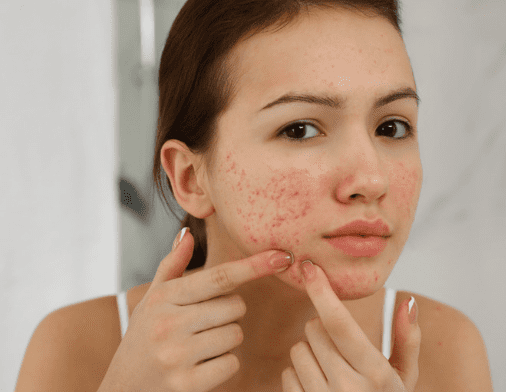I have acne, is dermaplaning the right treatment for me?
Dermplaning is a popular skincare treatment that involves using a scalpel or special tool to remove dead skin cells and vellus hair (peach fuzz) from the face. While dermaplaning can have many benefits for the skin, some people are concerned that it may worsen acne or lead to breakouts. In this blog post, we’ll explore the relationship between dermaplaning and acne, and whether or not this treatment is suitable for those with acne-prone skin.
What is dermaplaning?
Dermplaning is a non-invasive skin resurfacing treatment that involves using a sterile blade to gently exfoliate the top layer of dead skin cells from the face. This process helps to reveal smoother, brighter, and more youthful-looking skin. In addition to exfoliating the skin, dermaplaning can also help to remove fine hair from the face, which can improve the application and appearance of makeup.
Can dermaplaning worsen acne?
While dermaplaning can be a highly effective treatment for many people, those with active acne may be hesitant to try it for fear that it could exacerbate their condition. However, when performed correctly, dermaplaning is generally safe and should not make acne worse.
In fact, dermaplaning can be beneficial for those with acne-prone skin, as it can help to remove dead skin cells and unclog pores, which can reduce the likelihood of breakouts. By removing the top layer of dead skin cells, dermaplaning can also improve the absorption of topical acne medications, making them more effective.
It’s important to note that if you have active acne, you should avoid areas of the face that are inflamed or have pustules, as these areas can be more sensitive and prone to scarring. Your esthetician should be able to customize your treatment to suit your specific skin concerns.
Tips for dermaplaning with acne-prone skin
If you have acne-prone skin and are considering dermaplaning, here are a few tips to help ensure a safe and effective treatment:
- Choose an experienced esthetician: Be sure to choose an experienced and licensed esthetician who is knowledgeable about treating acne-prone skin.
- Avoid active breakouts: Avoid areas of the face that are inflamed or have active breakouts, as these areas can be more sensitive and prone to scarring.
- Use gentle pressure: Your esthetician should use a light touch when performing dermaplaning on acne-prone skin to avoid irritating or aggravating the skin.
- Follow up with the right products: After dermaplaning, it’s important to follow up with the right skincare products, such as a gentle cleanser, hydrating serum, and non-comedogenic moisturizer. This can help to minimize the risk of breakouts and promote healing.
In conclusion, dermaplaning is generally safe and can be beneficial for those with acne-prone skin when performed correctly. By choosing an experienced esthetician, avoiding active breakouts, and using gentle pressure, you can enjoy the many benefits of dermaplaning without exacerbating your acne. As always, be sure to consult with your dermatologist if you have any concerns about your skin.


